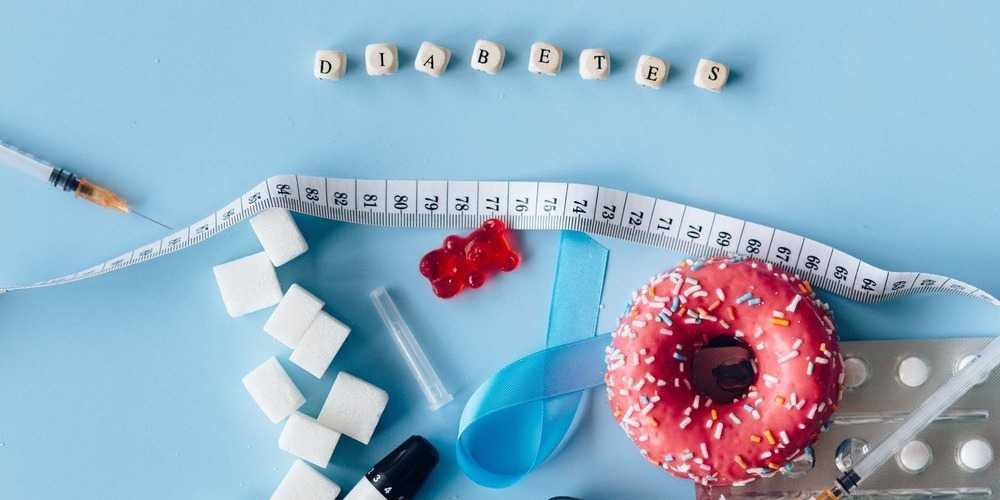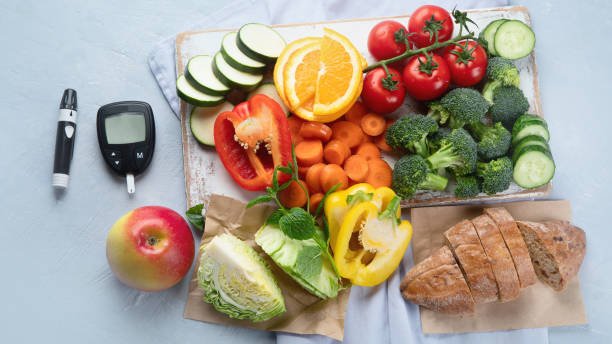
Dietary Tips For Properly Managing Type 2 Diabetes
November 14th every year is World Diabetes Day. The 2021 World Diabetes Day uses “Access to Diabetes Care: If Not NOW, When?” as the annual theme, hoping to arouse global awareness of diabetes. In addition to understanding and paying attention to it, it can also encourage people with diabetes to understand diabetes management and actively take control of their personal health.
Adjusting your lifestyle can help with diabetes care, and eating right is the simplest way to manage diabetes nutritionally. People with diabetes may wish to start with the following dietary tips:
Carbohydrates key to nutritional management of diabetes
The key to nutritional management of diabetes is controlling carbohydrate intake. The following introduces two ways to manage carbohydrate intake, namely the carbohydrate calculation method and the glycemic index method.
Sugar calculation method
The carbohydrate calculation method (also known as the carbohydrate calculation method) is to calculate the amount of carbohydrates consumed by diabetics at each meal every day. Generally speaking, people with diabetes should get about half of their calories from carbohydrates1. In other words, if a person with diabetes consumes about 1,500 calories per day, the calories converted through carbohydrate intake should be kept below 700 to 800 calories, and the calculated daily carbohydrate intake should be controlled between 175 and 175 calories. Between 200 grams (about 4 calories per gram). The following dietary examples will help you have a clearer idea of this:
breakfast
- 1 slice of whole wheat bread: carbs = 12 grams
- 1 spoonful of beans: carbs = 8 grams
- ½ cup oatmeal: carbs = 27.4 grams
- 150g Greek yogurt + ½ cup berries: carbs = 13.5g
The total carbohydrate content of breakfast is 60.9 grams.
By eating approximately the same amount of carbohydrates at each meal, you’ll find it easier to manage your diabetes nutritionally throughout the day.
Glycemic index method
Some carbohydrates release glucose slowly but continuously, other carbohydrates release glucose quickly. The glycemic index (GI) represents the rate at which each food releases glucose. Including more low-GI food choices in your diet plan will help achieve effective nutritional management of diabetes.
The carbohydrate calculation method and the glycemic index method of choosing low-GI foods are both excellent ways to help with nutritional management of diabetes. Both of these methods can be combined with a diabetes diet plan to help people with diabetes achieve correct dietary management. Target.
Sugar lovers think so
We recently conducted a survey, hoping to use the questionnaire to gain a deeper understanding of how people with diabetes live with type 2 diabetes.
92% of people with diabetes believe that dietary management is the key to controlling diabetes, but choosing the right diet is still quite difficult for them.
So, how do you create and implement your diet plan?
Eat right and things to avoid
Consuming foods that contain large amounts of refined carbohydrates (commonly found in soda, white bread, and noodles) can easily interfere with nutritional management of diabetes. People with diabetes can switch to foods that do not contain refined carbohydrates (minimally processed carbohydrates), such as peas, beans, whole grains and vegetables.
In order to achieve ideal health, people with diabetes should consume different types of food to provide the various minerals, vitamins and nutrients needed by the body. The recommended intake amounts of various foods are introduced below:
Fruits and vegetables
Consuming 2 to 3 servings of fresh fruits and vegetables of different colors every day can provide a variety of vitamins and minerals that are beneficial to health.
Protein
Eat 140 to 200 grams of various types of protein every day, such as unsalted nuts or seeds, seafood, beans, peas, and eggs. (28 grams of meat, 1 egg, ½ tablespoon edamame, or 1 tablespoon peanut butter).
Cereal
Eat 5 servings of cereal a day such as whole-wheat scones, whole-wheat tortillas, whole-wheat pasta or brown rice.
Dairy
Consume 3 servings of low-fat dairy products and drinks.

Choose specific foods and carefully control portion sizes
Once you understand what landmine foods are and what food options should be included in your daily diet, you can easily create a diet plan that is unique to you. In addition, controlling the portion size of your diet can also help with diabetes nutritional management.
However, if you suddenly reduce your portion size overnight, not only may you increase your hunger, you may even increase your risk of binge eating. When sugar lovers want to get the satisfaction of enjoying food within strictly controlled portion sizes, the easiest way is to increase the amount of fiber in their diet. (Fiber-rich foods such as whole grain breads, oats, berries, broccoli, beans, etc.).
Lentils, peas, and turnip greens are a few foods that are extremely high in fiber and should be included in your daily menu choices.
Include grilled fish, pan-cooked skinless meats, or lean beef or pork with the fat removed, and make sure your meal plan includes non-starchy vegetables (such as kale, bok choy, asparagus, corn shoots, etc.) at every meal. Bean sprouts), high-quality protein and healthy low-GI carbohydrates.
Modern people lead busy lives. If they are unable to obtain the nutrients required for diabetes nutritional management from food, they may consider supplementing with diabetes-specific nutrients in a timely manner. Abbott Pusenna has clinical medical evidence and its nutrition complies with the recommendations of the American Diabetes Association. It is a nutritional product specially designed for diabetics. It provides 35 kinds of nutrients such as chromium and dietary fiber. Its unique nutritional combination can help diabetics strengthen their physical strength. In addition, it also has vitamins C, E, D, zinc, folic acid, selenium and other nutrients to help improve protection. Breakfast is the most common meal for diabetics. It is recommended to replace the breakfast drink with Abelesina to facilitate nutritional management of diabetes.













